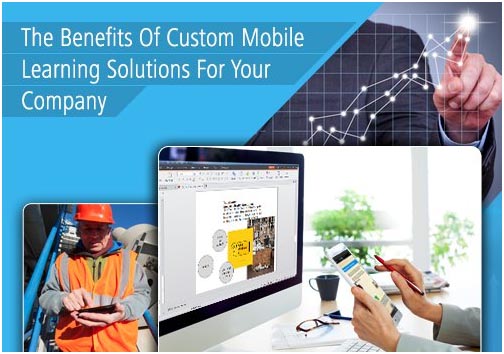
The COVID-19 pandemic has redefined how we work, and we now see the “new normal” of remote operations. In this article, I show 4 examples on how to leverage the blended learning 2.0 approach as you plan virtual trainings for remote learners.
What Is Blended Learning 2.0?
Classic blended learning combines the best of two modes – Instructor-Led Training (ILT) sessions with self-paced and self-directed online learning. A median offering of the two modes, blended learning is often considered the optimal mode for training.
To match today’s changed workplace dynamics (training remote learners), blended learning 2.0 uses a combination of Virtual Instructor-Led Training (VILT) with self-paced online learning.
To make a successful transition to the blended 2.0 mode, it is important to note that in contrast to the classic blended model, the success of this mode rests on:
- Adopting a strategy to manage the transformation (change management) with learners, trainers, and senior stakeholders.
- The adaptability of all parties (training teams and learners) to the changed dynamics.
- Addressing technology and accessibility issues for remote learners.
- The adoption of revised pedagogy that will engage remote learners and drive learning, its application, and behavioral change (without the physical intervention of a trainer).
How Can You Adopt the Blended Learning 2.0 Approach for Trainings?
As organizations undertake virtual training transformation, a common concern that L&D teams have is whether the virtual training can create the same value and impact as their existing ILT sessions. The power of ILT lies in the human intervention by a trainer, while the power of a classic blended learning model is in accessing the materials from anywhere at any time while enjoying the benefits of face-to-face support and instruction.
In the blended 2.0 mode, we focus on the outcome as the start point and work upon the medium (virtual training platforms and LMS/LXP platforms) and methods (crafting learning journeys in contrast to discrete sessions) to achieve the desired mandate of engaging the remote learners as well as meeting or exceeding the impact of the ILT sessions.
I share 4 examples on how you can adopt the blended learning 2.0 approach for trainings that are typically delivered in the ILT mode. My recommendations will help you engage remote learners and match or exceed the value and impact of ILT.
Example 1: Blended Learning 2.0 Approach for Sales Training
Sales personnel would have frequent customer/prospect interactions and need inputs on how to tackle sales pitches and conversations and consume learning in smaller chunks.
This is how a blended learning path for sales training may be designed:
- Core learning on topics such as negotiation skills, customer communication management, and so on through microlearning (mLearning through videos as a primary format). Gamification too may be a part in subtle forms to keep the challenge and target achievement aspects of a sales environment alive during the training
- Higher components of role-play and scenario-based discussions as part of the VILT sessions. Useful tips and guidelines may be shared post these sessions in the form of downloadable resources and job aids.
- To provide maximum support, simulated learning environments may be provided in the VILT session to replicate maximum components from the erstwhile role-plays.
- A flipped classroom medium to allow the virtual instructor to focus on learner queries and difficulties they may have encountered during the online practice scenarios. This allows the virtual instructor to adapt to mixed levels of participants too.
Example 2: Blended Learning 2.0 Approach for Leadership Training
Leadership trainings cover three broad categories of leaders – aspiring, mid-level, and senior leaders. This warrants a classic blend of approaches since each category would require a different focus.
Here is how a blended learning path for leadership training may be designed:
- Self-paced learning components would be higher in ratio since most leaders have a paucity of time due to several engagements and finding common availability for VILT sessions may become a challenge. New leaders may need more of conceptual learning, while mid to senior leaders would benefit more from case studies and decision-making aspects.
- A custom or personalized learning path designed as a result of a simple online pre-assessment/survey may be the answer training needs to be delivered for a diverse group of leaders.
- Virtual instructor sessions may include expert talks or webinars to add the requisite value for leaders instead of the usual facilitated sessions. These sessions could be recorded and shared as reference material post the session.
- Moderated threaded discussions can be a good technique to promote collaborative learning amongst the participating leaders.
- Simulated learning environments are also a good possibility in both the online and the VILT session.
Example 3: Blended Learning 2.0 Approach for Compliance Training
Compliance trainings come with a strict mandate and need rigorous tracking to ensure the overall outcome is met. In addition, compliance trainings warrant a change in behavior to drive long-term results.
The following is how a blended learning path for compliance training may be designed:
- Self-paced learning following a microlearning, scenario-based learning, or even a gamification format will ideally form a larger portion of the learning path to disseminate content. Immersive learning is the key here since the majority of the content will be consumed by the learners on their own.
- Virtual training sessions should be used for discussions and active engagement in clarifying concepts, sharing scenarios, and case studies to show the impact of non-compliance.
- Business leader webinars can be a good value-add too for providing the human touch aspect in the training and will aid the needed behavioral change to a large extent.
Example 4: Blended Learning 2.0 Approach for Applications Training
Applications trainings are usually more straightforward and process-oriented. The most common form of training is application simulations, and this can be delivered in ways that impact their long-term knowledge retention and application.
Here is how a good blended learning path for applications training may be designed:
- The majority of the learning content, especially the step-by-step processes, can be driven through self-paced
- We may follow the watch, learn, practice, and read more model of training, where the practice mode can be delivered through simulated virtual sessions.
- The instructor’s role would entail ensuring that the participants have learned and assimilated the nuances of the application well.
- The watch mode can be created as video-based learning, and the read more could be in the form of PSTs.
As you would note, to match today’s workplace dynamics (remote operations), the answer lies in adopting the next gen approach – blended learning 2.0 or the blended 2.0 mode. I hope the featured examples in my article provide the required insights to adopt a blended learning 2.0 approach for trainings.
Meanwhile, if you have any specific queries, do contact me or leave a comment below.



